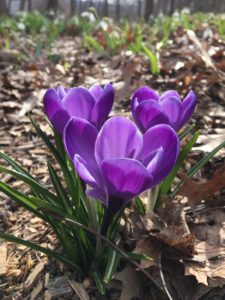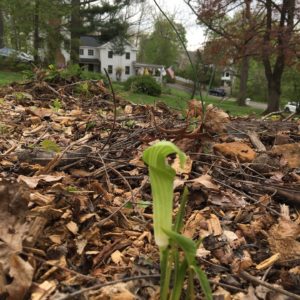In this second installment, we begin the dramatic tale of woman vs. weeds, weather, and woodchucks.
Or maybe we’ll rewind just a bit little earlier.
Most of the winter was spent looking at catalogs and websites — much of it focused on building a better understanding of what could grow in the drip line and root zone of a black walnut. There isn’t any single, definitive source, but the Morton Arboretum sure comes close. As you may remember, those magnificent trees have a killer instinct — and juglone is their weapon.
It was also spent cozied up next to the fire, planning how to maximize weekend time to prioritize which areas to tackle first. The first would be on the front of the property bordering the street. The yard was a major mess from digging of a new water main to our house. All winter, there was an ugly scar up the middle of our front yard, and the area next to the street was worst.
We had a late start because of the March snow storms, but we were out there as soon as things melted and the mud dried up a bit. We began the glamorous process of removing the remaining rocks and adding generous amounts of compost to rebuild the top soil. We seeded and applied salt hay to protect the emerging blades. While it was still early in the season, I gave the privet at the front a pruning. They still had a sparse, lopsided look (see below), and I should have pruned them all back hard. More on the privet in another post.
I then tackled the arduous task of removing grass from the area. This is not for the faint of heart! I soon also got to work behind the house, clearing a bed in parallel.
I got really good with the pickaxe. I highly recommend it for removing stubborn rocks. This took a couple of weekends.
When the delivery of soil arrived, our little 20-year-old wheelbarrow couldn’t handle the quantities and load. So naturally, we had to purchase of a large, heavy-duty model, knowing it would come in handy for years to come. It made things much easier than loading the cart behind the ride-own mower, and offered more precision.
I clocked thousands of steps moving the pile across the wide and deep expanse, working it in as I could. The topsoil was immensely helpful in rebuilding tilth, which had suffered from both the water main work and the former owner plowing everything living at the bottom of the yard into pile. We paid the guy digging the trench for the water main to spread the pile with his front loader, then spent much of the early spring removing branches, roots and various trash that had been buried in it.
The bed was now prepared!
The majority of the first round of plants came from the Frelinghuysen Arboretum plant sale (great quality and supports a good cause!) and the local nurseries, Great Swamp Greenhouse and The Farm. In the meantime, mail order deliveries of bare-root plants and plugs waited in the wings. The March snows had put me behind schedule!
When the delivery truck arrived, what seemed like a big order looked tiny in the grand scale of the front bed. I estimate some 75 plants, along with organic amendments for each, went in to the initial planting. I’ve lost count of the total, since I’ve been adding to it since then. To me, it’s like a painting, adding layers until the composition is done.
Yet more pick-axing to put in the 8 boxwoods behind the privet. While some areas were fine, others were full of roots and rocks. Surgical precision and patience were required. I learned a few new tricks, like using newspaper strategically for weed supression.
Amidst this, the bulbs and transplants I had saved and installed in the Fall provided much-needed cheer and signaled we were home.
And another excellent surprise was seeing some native plants, such as this Jack-in-the Pulpit, growing where we had removed a stand of stilt grass. Next on the list: adding ferns and wild ginger that were waiting to be tucked in.
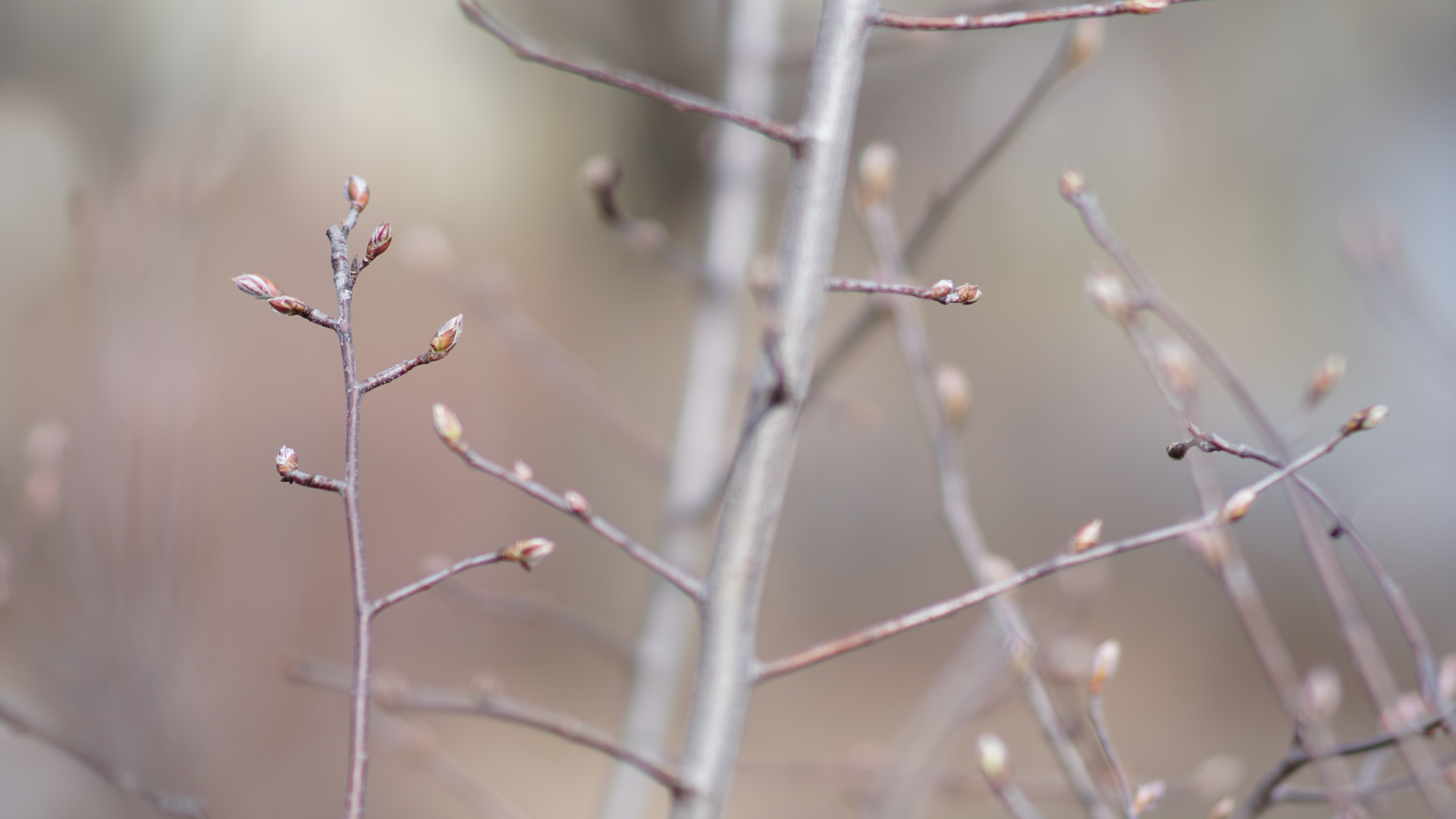
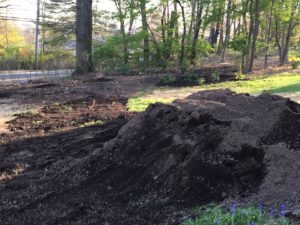
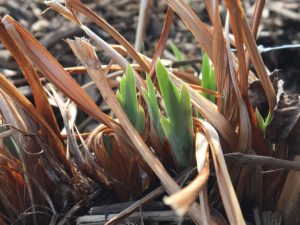
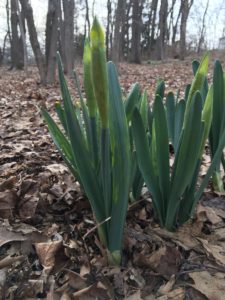
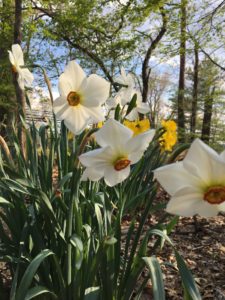 Â
 